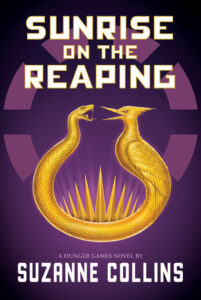By Mandy Rosenberg ’20
Over the years my skepticism for sequels has grown for a market and audience that is becoming dependent on them. Disney is not exempt from this trend as Pixar in the past decade produced more sequels than its original stories and is currently in a “remake era.”
If you have ever watched a sequel to a Disney Classic, most likely you will find that the stories are blasé and the writing all around is uninspired, unlike the movie that came before it. This describes Disney’s Frozen 2, except it was given a massive budget rather than being sent directly to DVD. Despite the writers’ efforts to take the audience along on another intriguing adventure with Anna, Elsa, and the gang, many pieces and characters get lost, quite literally, as the story progresses.
The beginning was reminiscent of the original film’s exposition, as the father tells the story of how a woman from the Northuldra tribe saved him from the angry spirits of the enchanted forest. Of course, this serves as the origin of Anna and Elsa’s insight to the journey that the entire movie is centered around.
However, the transition between the children playing, to a flashback to the father, to the past again, then to the present was awkward. A quick fix would be to have the father narrate the story, then cut to Elsa in her room hearing the voice. However, like the father as he interrupts the young girls during their play time to tell them a significant story of his own life, the film in itself comes off as completely random and pointless, as Elsa never expressed desire to discover the source of her power, meanwhile no one was asking.
The concept of the movie is a quick video I would come across in my youtube suggestions.
After Elsa embraces the voices she is hearing in her head, they send Arandelle a natural disaster which forces the village into exile to a nearby woods. As Elsa insists on finding the source that has been bugging her, the gang embraces on a journey to the enchanted forest. Apparently they knew where this forest was all along, and it only took a night to find it.
For the next forty minutes of the movie, the gang is seen getting into random trouble, and discovering new and presumably relevant details of their family which do not move the plot along. They meet the tribe of the enchanted forest and the soldiers sent by their father to protect it. It was an exciting moment when the characters from the tribe were introduced, whose names were mentioned, however I cannot remember as they were only in it so briefly. Anna meets a girl that is friendly and is willing to show her the ways of the forest and Kristoff meets a man that helps him to propose to Anna, which to this point in the movie has been Kristoff’s sole purpose as a character.
Then suddenly it is all dropped; the entire forty minutes of enchanted woods did nothing to build up to a climax. It was an overextended exposition at could have been replaced with a purposeful, fun, and entertaining journey like the previous film, but was instead dull and full of redundant moments of Anna begging her sister not to leave her behind.
So Anna and Elsa abandon Kristoff in a moment of Anna’s complete hypocrisy, and Kristoff is left alone in the woods. He sings the most remarkable song of the entire movie, then the movie forgets he exists until there is only fifteen minutes left, when Anna needs saving and proposing to. As each scene progressed I sat in my seat thinking, “Actually, I did want to know how Kristoff survives, considering he is an entertaining character with a genuine amount of backstory.” It’s as if
Disney has this tradition that if a character is interested in marriage, the proposee can only be one-dimensional; that traditionalism can only be broken one trope at a time.
Beyond the disappointment that was the discarding of Kristoff and the new cast for the last bit of the film, there was the final rising action which lead to the anti-climatic climax. With little struggle, Elsa walks into this ice cave like she were walking into her own ice castle, and connects with the voice, discovering the source of her powers and revealing all this dirt on her grandfather that can save Arendelle before freezing up.
Olaf disappears due to the lack of Elsa’s power to keep him alive, and Anna receives an ice message to destroy a dam, which she does while singing her thoughts. She gets the giant rock creatures to destroy the dam, Elsa reappears unfrozen and stops the wave with ease. The forest is freed, everyone is happy. They had spent such a substantial amount of time in the enchanted forest that when they began to truly search for what had led them there in the first place, it felt rushed.
I walked out of the theatre telling my friends that I thought Olaf hadn’t been dead for long enough.
There was potential in the characters they introduced, which they could have used to expand and improve their adventure. Instead, they chose to focus the story on Elsa and her search to discover herself, which isn’t much different conceptually from the first film.
To conclude the story, Elsa decides to join the woods to live in her true nature and make Anna the queen of Arandelle. This was something I was warned of before I went into the theatre and I wasn’t any less dissatisfied when it came to this resolution. There is not really an explanation as to why living in this enchanted forest will improve Elsa’s life from before. It is explained that it will allow her to be in her natural element where snow surrounds her. This is reminiscent of a scene in the first film where Elsa tells Anna that on the mountain is where she belongs.
In the wilderness her powers have no limit, yet do not seem to serve any practical purpose. As Arandelle’s queen, her powers were a gift that she used to protect and amaze her people. However, giving up her role as queen reduces her powers to the unnatural hazard they were when the kingdom wanted her exiled.
Lastly, the soundtrack is a let down from the fun bops of the first movie. It saved the soundtrack for powerful and intimate moments which moved along plots and developed characters. They are memorable. Although the movie was released six years ago, when listening to them once again I can recite lyrics from every one of the songs. Whether I was a nerdy middle schooler is beyond the fact that these are genuinely catchy songs with hooks and purpose. To this day a person cannot say “let it go” without another bursting into a mockery of Idina Menzel, and snowmen are often accompanied with the iconic “Do you want to build a snowman?”
Before seeing the movie, I knew this was a lot to live up to, therefore I went in with an idea of the soundtrack and lower expectations. From the 7 songs from the soundtrack, there are only two that come stuck. “Into the Unknown” and “Lost in the Woods”. I was thrilled to hear Johnathan Groff, whose talent shines on Broadway, after having been excluded from the original film’s master soundtrack.
“Into the Unknown” is the “Let it Go” of the sequel, as it was the song everyone went into the theatre knowing with its mass amount of marketing. It is Elsa’s call to the voices in her head which she hopes to explore, and since she is voiced by Idina Menzel, there is lots of flawless belting which serves Elsa’s tameless personality.
There were a few “what the heck” moments, once when Olaf began singing about getting older, and then again to the cameo to the opening castle song of the first movie. I understand that Olaf is used as frequent and casual comic relief in this movie that has the potential for adult marketing without him.
However, {the song about when he gets older} is a weak call back to the campy “In Summer,” it was a filler song which only purpose was to crack a quick smile from the younger audience and is mediocre next to Olaf’s first solo. There is also a moment where after Anna and Elsa reveal that their mother is {however you spell it} they begin singing the opening to the first movie; a cameo which we are supposed to connect back to the first movie maybe even in an “ah-ha” moment.
When this happened, I was confused as to why the people were singing at them, even after quickly realizing that it was a song from the first movie. In its context it seemed unwarranted and random, that if they wanted to include this cameo somewhere in the movie it could have been in a moment where Anna and Elsa are less exposed and surrounded.
Perhaps when Elsa is seen living or returning to the woods, or as brief conversation between the leader of the troop which would lead into it.
Despite all the flaws in the writing, the detail in the animation style is beautiful impressive. The team took time to create entire detailed wardrobes for Anna and Elsa as if there were a crew costume designers and immediately when Olaf is reintroduced you can see a pattern of crystal snowflakes intricately placed on his tummy.
The songs that are remarkable enough to get stuck in my head were worth seeing seeing the movie. I would also be alone if I did not mention the master comedic scene where Olaf reenacts the first movie which had the theatre cackling.
Overall, Frozen 2 is nothing less than a classic Disney sequel. They are worth watching if you enjoy the original characters and animation styles, but in the end they double down in quality and technique.



